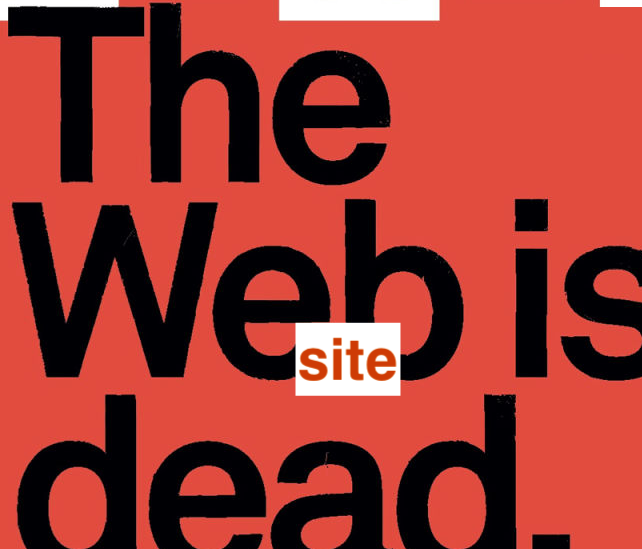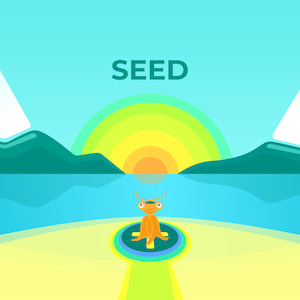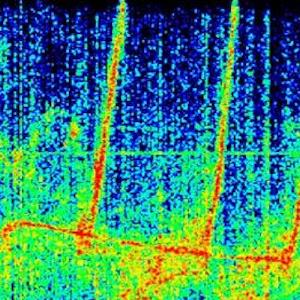Sound Codes, a research lab based in Mumbai and the Himalayas, was founded by Akash Sharma – to map acoustic signatures of various heritage structures across India, which grew into an intersection of practices over time. Sound Codes is perhaps the very first attempt to capture, preserve and make available the acoustic imprints of certain heritage spaces in India. Seldom does an industry musician transgress beyond his or her given roles and boundaries. Even rarer and singular when a jingle-producer (music composer for television commercials) switches over to coding, sound-mapping, building synthesizers and creating acoustic signatures. Yet those who do, even as they are far and few, open up new dimensions, creating unique experiences and possibilities. The narrative of an artist and sound-lab, traversing multiple audio dimensions and ideologies. From caves to virtual worlds to conceptual sound generation to codified dance arenas. We spoke to Akash about the formation and growth of Sound Codes, the emergence of sound-coding in India and the intersectional values upon which such conceptual arts are built upon. How data and maths can become instruments for musicians.
Tell us a bit about your background, before Sound Codes came about?
Circa 2014, I was working as a music producer in Mumbai. My job was about multiple roles as a composer, mix engineer and producer. During this phase the majority of my tasks were producing works which would be used for publicity. Soon I realised that most clients demanded typical steps in terms of loudness, dynamic range, spectrum distribution, melodic arrangement etc. I created tools on MaxMSP which I could use with Ableton and standalone ones with Logic and Pro Tools. I began automating my tasks. I would say this was my first real experience of using computation and creative coding for production. Yet these jingles started to haunt me, in my sleep. Soon I decided to call it quits as the jingles were looping in my mind, in my free time, and taking over my aural and aesthetic preferences. I told my boss and the agency folks that I could not continue any further. I quit.
And the birth of Sound Codes?
I packed up all my equipment, made a custom rack for my motorcycle and rode off to Assam. I had few friends in Assam, specifically in Jorhat and nearby villages. I spent the next 8 months in Assam, moving from place to place. During this period I realised we do not have 'Indian Reverbs' which can be used in a production sense. Having a fair understanding of maths and convolution practice, I devised a patch for recording and processing signal and data into a usable convolution reverb. Creative computation and 'archaeo-acoustics' in remote Assam was the starting point for Sound Codes. Soon I devised an plan of action and reached out to the Archeology Department of India. A.S.I was really supportive towards this new conservation plan, and I got the permission to gather the dataset of the Ahom kingdom. The consequent work lead to a repository of Indian heritage sounds. Creating aural snapshots - as acoustic signatures or impulse responses.
As an artist, what is the essence of coding for you?
I personally think that sound is energy in essence. I harness code and computation, electronics and acoustics, all together. To me it is energy flowing from one system to another. This flow of energy can be worked upon either by circuits or lines of codes, or physical spaces. Physical, electronic and digital environments all have their own uniqueness - everything has to be considered. Creative computation creates possibilities which are super difficult to manifest in the real physical world. Computation can synthesise environments - For example, imagine that an ocean of liquid mercury waves, approaching a shore with titanium rocks. Factors such as viscosity, material properties, flow dynamics, combined with atmospheric pressure can be imagined, simulated, computed and generated. This algorithmic process, which can be generative, can then synthesis sound and music, manifesting in reality, and not just remain as abstract thought.
Hence the very idea of an instrument becomes limitless?
Data set and math can be combined, to become an instrument. Code generated sounds change existing notions of creativity and the compositions. Algorithms allow us to devise our own distinctive sonic grammar. Consequently this grammar can be used to explore on a micro or macro level - of melody and rhythm which can be written in terms of time divisions and or frequency ratios. As a contemporary study, the works of Eric Regener and Iannis Xenakis influenced me early on. I like to think that physics, math, electronics, computation, as an all encompassing union, in sound, as data flowing through different systems. Take for example - Breathing can be translated as rhythm which is connected to a given heart rate. Intentional breathing patterns can bring changes in the body which can translated as data and hence sounds. Imagine the compressing and decompressing bellows of an accordion. End of the day as sound is generated, we are the ones consuming it in space which is nothing but acoustics. We cannot really discount the physical significance in the outcome...
What's Algorave all about?
This word Algorave was coined by Alex McLean in 2011. An Algorave is an event where people dance to music generated from algorithms, using live coding. Algoraves can represent various genres, including complex forms of techno etc. The movement has been described as a meeting point of hacker philosophy, geek culture, and clubbing. At an Algorave event, the artist may not be the main point of focus and the attention may be based around a screen that displays live coding - so that the audience can see the process of live programming. I feel, this form of performance is the most transparent way of performing electronic music. You open the hood and go under. In India, Abhinay Khoparzi, Joshua Thomas and myself are the key propagators of Algorave.
8knobs, the DIY crowd-funded synth - What is that all about?
8knobs is a synthesiser and a midi controller. It’s built on the popular arduino platform and embodies the character of the user. 8knobs is portable and encourages synthesis, electronics, computer literacy and experimentation. It is open source and hacker friendly, usable in many ways. As a synthesiser, 8knobs best creates drones and atmospherics. Initially I made a few limited edition pre-built units and as a reaction it lead to successful crowd-funding campaign. . Now I am keeping 8knobs purely as DIY kits. Make it yourself. The synth building exercise allows you to pick up new hands-on skills. Essentially with 8knobs construction, you learn soldering, fundamentals of sound synthesis, electronics and programming.
Much more at https://sound.codes
Circa 2014, I was working as a music producer in Mumbai. My job was about multiple roles as a composer, mix engineer and producer. During this phase the majority of my tasks were producing works which would be used for publicity. Soon I realised that most clients demanded typical steps in terms of loudness, dynamic range, spectrum distribution, melodic arrangement etc. I created tools on MaxMSP which I could use with Ableton and standalone ones with Logic and Pro Tools. I began automating my tasks. I would say this was my first real experience of using computation and creative coding for production. Yet these jingles started to haunt me, in my sleep. Soon I decided to call it quits as the jingles were looping in my mind, in my free time, and taking over my aural and aesthetic preferences. I told my boss and the agency folks that I could not continue any further. I quit.
And the birth of Sound Codes?
I packed up all my equipment, made a custom rack for my motorcycle and rode off to Assam. I had few friends in Assam, specifically in Jorhat and nearby villages. I spent the next 8 months in Assam, moving from place to place. During this period I realised we do not have 'Indian Reverbs' which can be used in a production sense. Having a fair understanding of maths and convolution practice, I devised a patch for recording and processing signal and data into a usable convolution reverb. Creative computation and 'archaeo-acoustics' in remote Assam was the starting point for Sound Codes. Soon I devised an plan of action and reached out to the Archeology Department of India. A.S.I was really supportive towards this new conservation plan, and I got the permission to gather the dataset of the Ahom kingdom. The consequent work lead to a repository of Indian heritage sounds. Creating aural snapshots - as acoustic signatures or impulse responses.
As an artist, what is the essence of coding for you?
I personally think that sound is energy in essence. I harness code and computation, electronics and acoustics, all together. To me it is energy flowing from one system to another. This flow of energy can be worked upon either by circuits or lines of codes, or physical spaces. Physical, electronic and digital environments all have their own uniqueness - everything has to be considered. Creative computation creates possibilities which are super difficult to manifest in the real physical world. Computation can synthesise environments - For example, imagine that an ocean of liquid mercury waves, approaching a shore with titanium rocks. Factors such as viscosity, material properties, flow dynamics, combined with atmospheric pressure can be imagined, simulated, computed and generated. This algorithmic process, which can be generative, can then synthesis sound and music, manifesting in reality, and not just remain as abstract thought.
Hence the very idea of an instrument becomes limitless?
Data set and math can be combined, to become an instrument. Code generated sounds change existing notions of creativity and the compositions. Algorithms allow us to devise our own distinctive sonic grammar. Consequently this grammar can be used to explore on a micro or macro level - of melody and rhythm which can be written in terms of time divisions and or frequency ratios. As a contemporary study, the works of Eric Regener and Iannis Xenakis influenced me early on. I like to think that physics, math, electronics, computation, as an all encompassing union, in sound, as data flowing through different systems. Take for example - Breathing can be translated as rhythm which is connected to a given heart rate. Intentional breathing patterns can bring changes in the body which can translated as data and hence sounds. Imagine the compressing and decompressing bellows of an accordion. End of the day as sound is generated, we are the ones consuming it in space which is nothing but acoustics. We cannot really discount the physical significance in the outcome...
What's Algorave all about?
This word Algorave was coined by Alex McLean in 2011. An Algorave is an event where people dance to music generated from algorithms, using live coding. Algoraves can represent various genres, including complex forms of techno etc. The movement has been described as a meeting point of hacker philosophy, geek culture, and clubbing. At an Algorave event, the artist may not be the main point of focus and the attention may be based around a screen that displays live coding - so that the audience can see the process of live programming. I feel, this form of performance is the most transparent way of performing electronic music. You open the hood and go under. In India, Abhinay Khoparzi, Joshua Thomas and myself are the key propagators of Algorave.
8knobs, the DIY crowd-funded synth - What is that all about?
8knobs is a synthesiser and a midi controller. It’s built on the popular arduino platform and embodies the character of the user. 8knobs is portable and encourages synthesis, electronics, computer literacy and experimentation. It is open source and hacker friendly, usable in many ways. As a synthesiser, 8knobs best creates drones and atmospherics. Initially I made a few limited edition pre-built units and as a reaction it lead to successful crowd-funding campaign. . Now I am keeping 8knobs purely as DIY kits. Make it yourself. The synth building exercise allows you to pick up new hands-on skills. Essentially with 8knobs construction, you learn soldering, fundamentals of sound synthesis, electronics and programming.
Much more at https://sound.codes





























0 -